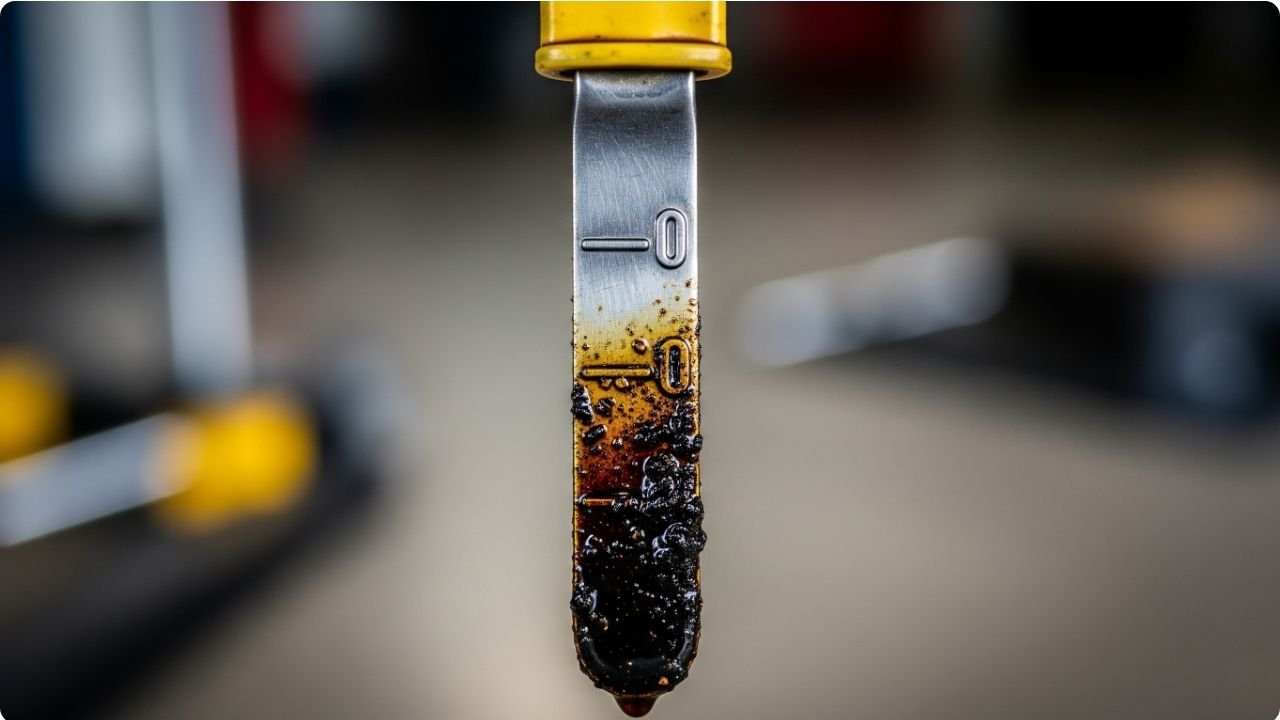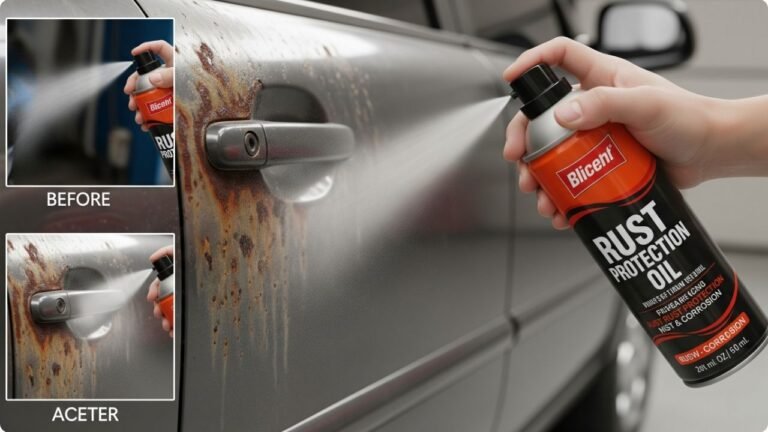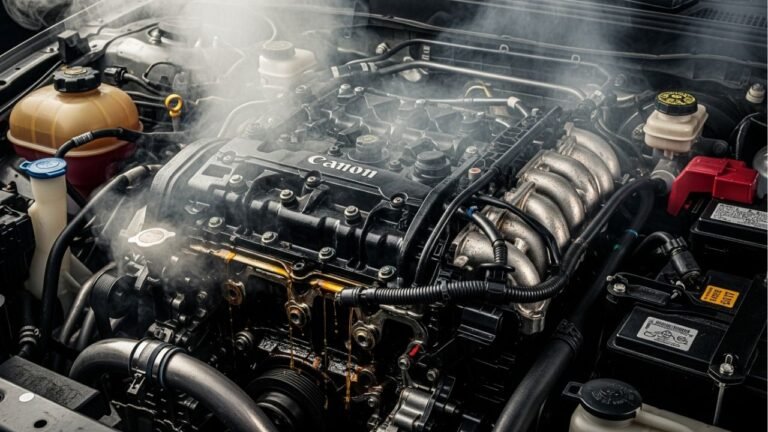How to Tell If Your Car Oil Is Bad: A Simple Guide

We’ve all been there. You’re cruising down the road, windows down, music up, and suddenly your car just doesn’t feel right. Maybe it stutters. Maybe it growls. Maybe a strange smell wafts up through the vents. That’s your car whispering—or screaming—for help.
One of the most common culprits? Bad engine oil.
If you’re not sure how to tell if your car oil is bad, don’t worry. You’re not alone. This guide breaks it all down, step by step, using easy language and real-life experiences. Whether you’re a new driver or someone who’s owned cars for years, you’ll learn how to recognize the signs, understand what they mean, and take action before it’s too late.
Let’s dive in, friend. Your car will thank you for it.
Why Engine Oil Matters More Than You Think
Oil is like your car’s blood. Without it, everything shuts down—or worse, breaks beyond repair. It keeps the engine cool, reduces friction, and prevents metal parts from grinding against each other like angry siblings.
But here’s the kicker: engine oil doesn’t last forever. Over time, it collects dirt, burns off, and loses the magical properties that keep your engine running smooth. If left unchecked, old oil can turn into sludge, clog passages, and lead to serious engine damage.
So if you’ve ever asked yourself, “Is my oil still good?” or “How to tell if your car oil is bad?”, you’re asking a smart, responsible question. Let’s get into the signs.
The Oil Looks Dark and Dirty
Ever checked your oil and thought, “Wait… that doesn’t look right”?
Fresh engine oil usually starts out honey-colored or amber. It’s thin, smooth, and flows easily on the dipstick. But as it does its job—trapping dirt, metal shavings, and combustion by-products—it gets darker and thicker.
After a few weeks or months, it might turn black, look gritty, or feel sticky between your fingers. That’s your first big clue.
Here’s how to check:
- Turn off your engine and let it cool for 5–10 minutes.
- Pop the hood and locate the oil dipstick.
- Pull it out, wipe it clean, reinsert it, then pull it again.
- Look at the color and texture.
If it’s black and sludgy? Time for an oil change. It’s that simple.
Engine Noise Gets Louder or Rougher
This one’s a bit sneaky. You might not notice it at first—but your engine will feel different when the oil’s bad.
Here’s what happens:
Fresh oil cushions the metal parts. But old oil loses viscosity and can’t do its job properly. That means more friction, more wear, and a louder engine noise.
It may sound like:
- Knocking
- Tapping
- Rattling
- Or a general “rougher” ride
I once ignored this for two weeks. My old Toyota started knocking during cold mornings. I thought it was just “old car problems.” Turns out, the oil had turned to goo. A quick change made the engine purr again.
If your car sounds different, don’t ignore it. It could be your engine oil crying out for a refresh.
The Oil Change Light or Check Engine Light Comes On
We all hate warning lights. But they’re there for a reason.
Most modern cars come with sensors that monitor oil levels and pressure. If your oil gets too dirty, too low, or isn’t circulating properly, your dashboard will light up like a Christmas tree.
Here’s what to look for:
- Oil can symbol (often red or yellow)
- Check engine light (can indicate multiple issues, including oil-related ones)
Don’t just clear the code and hope for the best. That light might be telling you your oil has gone bad—or worse, your engine is already suffering.
Make it a habit: if the light comes on, check the oil. Even if it’s just a quick dipstick inspection.
You Smell Something Burning
This one hit me on a road trip through the hills of Sylhet. I was halfway up a steep climb when I noticed a faint burning smell, like hot rubber and smoke. I pulled over, popped the hood, and boom—burning oil odor.
What does burning oil smell like?
- Sharp
- Acrid
- Almost like a mix of plastic and burnt toast
It usually means one of two things:
- The oil is leaking onto hot engine parts, or
- The oil is old, thin, and overheating inside the engine
Either way, it’s a sign your car oil is bad or that you’re overdue for a change.
If you ever smell burning oil, don’t ignore it. That odor means you’re on the edge of serious damage.
Your Car Feels Sluggish or Slow to Respond
Oil doesn’t just keep things lubricated—it also affects performance.
Bad oil can cause:
- Sluggish acceleration
- Slower gear shifts
- Lower fuel efficiency
- A general “heavy” feeling when driving
Imagine running a marathon with syrup in your veins. That’s what it’s like for your engine running on old, thick oil.
I once noticed my car hesitating during acceleration, especially in second gear. It wasn’t until I checked the oil—thick, black, almost sludgy—that I realized the cause. A simple oil change later, my car drove like new.
If your car just doesn’t “feel right,” the oil might be the reason. It’s a small fix that makes a huge difference.
You’ve Gone Too Long Since Your Last Oil Change
Let’s be real: life gets busy. We forget appointments, birthdays, and yes—even oil changes.
But time matters just as much as mileage when it comes to oil.
If it’s been:
- More than 3,000–5,000 miles (for conventional oil)
- More than 6 months since your last change
- Or you can’t even remember the last oil change…
Then guess what? There’s a good chance your car oil is bad.
Modern synthetic oils can last longer, but even they degrade over time. Especially if you live in a hot, dusty, or humid climate—like most parts of Bangladesh or Southeast Asia—oil breaks down faster.
Keep a note on your dashboard or set a reminder on your phone. A timely oil change is cheaper than a new engine.
Quick Reference – Signs Your Car Oil Is Bad
| Symptom | What It Means | What To Do |
|---|---|---|
| Dark or black oil | Oil is contaminated and losing effectiveness | Change oil immediately |
| Engine noise or knocking | Not enough lubrication due to degraded oil | Check and replace oil |
| Dashboard warning lights | Oil level, pressure, or quality is poor | Check oil with dipstick, get service |
| Burning smell | Oil is overheating or leaking onto hot engine parts | Stop car, check oil, fix leaks |
| Sluggish performance | Engine struggling due to poor oil quality | Do an oil and filter change |
| Long gap since last change | Oil has aged beyond its usable life | Replace oil regardless of appearance |
The Oil Level Drops Too Fast
Checking oil isn’t just about color or smell—it’s also about how much is left.
If your oil level is dropping faster than usual, you may have:
- A leak
- Excessive burn-off
- Or your engine is consuming oil due to wear and tear
This is serious. Low oil means high risk of damage. If you’re topping up every few weeks, your car oil is bad, or there’s a deeper issue.
Pro tip: always check oil levels when the car is cold, parked on a flat surface. If you see the level below the “Low” mark repeatedly, it’s time for a mechanic visit.
Sludge Under the Oil Cap
Here’s a trick most drivers don’t know.
Unscrew your engine oil cap (when the engine is cold!) and look underneath. See milky residue, thick gunk, or sludge?
That’s a red flag.
Sludge means the oil has broken down and mixed with moisture or contaminants. It usually points to:
- Long intervals without oil changes
- Frequent short trips (where the engine never fully warms up)
- Poor quality oil
If your cap looks like the inside of a Nutella jar—brown and sticky—your car oil is bad, and it may already be harming your engine.
Tips to Keep Your Engine Oil Healthy Longer
Now that you know how to tell if your car oil is bad, let’s flip the script. What can you do to keep it in good shape for as long as possible?
Here are some practical, everyday tips that work wonders:
- Stick to your oil change schedule. Whether it’s every 5,000 km or every 6 months—don’t delay it.
- Use the right type of oil for your engine. Your owner’s manual will tell you exactly what you need—conventional, synthetic blend, or full synthetic.
- Warm up your engine before driving in the morning. This helps the oil circulate and perform better.
- Avoid too many short trips. Engines need time to heat up, or else moisture builds in the oil.
- Keep your engine clean. A dirty engine stresses the oil faster.
- Replace the oil filter during every oil change. Dirty filters mean dirty oil—simple as that.
Think of it like this: your car’s oil is like skincare for your engine. A little care today saves a ton of regret tomorrow.
How to Change Your Oil (If You Want to DIY It)
If you’re the hands-on type (like I tried to be one summer), you can even change your oil yourself. It’s not hard—just messy.
Here’s what you’ll need:
- The right oil (check your manual)
- A new oil filter
- A wrench, funnel, and drain pan
- Gloves and rags
Step-by-step (keep it safe and slow):
- Warm up the engine for 5 minutes, then turn it off.
- Jack up the car safely and place it on stands.
- Place the drain pan under the oil plug.
- Unscrew the plug and let the oil drain completely.
- Remove the old oil filter and replace it with the new one.
- Reinsert the drain plug securely.
- Add fresh oil slowly using a funnel.
- Check the level with the dipstick and top off if needed.
- Run the engine for a minute, turn it off, and check for leaks.
DIY oil changes save money, but only if done correctly. If you’re unsure, ask a mechanic or a more experienced friend.
Quick Recap – The Main Signs Your Car Oil is Bad
Here’s a handy bullet list for your glovebox—or your memory.
- Dark, dirty, or sludgy oil on the dipstick
- Knocking or loud engine noises
- Warning lights on the dash
- Burning smells from the engine
- Sluggish acceleration or rough driving
- Low oil level or frequent top-ups
- Sludge or gunk under the oil cap
- You forgot the last oil change
If any of these sound familiar, it’s time to show your car some love.
FAQs – You Asked, We Answered
Q1: Can I still drive with bad oil?
Technically, yes—but you shouldn’t. Driving with bad car oil wears down your engine fast. What you save today could cost you a new engine tomorrow.
Q2: How often should I change my oil?
Every 3,000 to 5,000 miles (5,000 to 8,000 km) for regular oil, and up to 10,000 miles (16,000 km) for synthetic. Also consider time—change it every 6 months, even if you don’t drive much.
Q3: What color should good oil be?
Fresh oil is usually amber, golden, or light brown. If it’s black, thick, or gritty, it’s gone bad.
Q4: Is synthetic oil better?
In most cases, yes. Synthetic oil resists breakdown, lasts longer, and performs better in hot or cold weather. But always follow what your car’s manual recommends.
Q5: Can bad oil cause the check engine light?
Absolutely. Old or low-quality oil affects engine sensors, timing, and performance. That light may be a warning from your car to check the oil.
Q6: Why does my car burn oil quickly?
It could be due to worn piston rings, valve seals, or just very old oil. If it’s burning fast, get a mechanic to inspect for leaks or internal engine wear.
Q7: Is black oil always bad?
Not always—but it’s usually a sign the oil is heavily used. If it’s also thick, smells burnt, or feels dirty—yes, it’s time to change it.
Q8: Can I mix old and new oil?
It’s not ideal. Mixing fresh oil into bad oil dilutes performance. If your oil is bad, do a full change.
Final Thoughts: Treat Your Oil Like Gold
Cars are loyal companions. They carry us through long drives, late nights, and road trips with friends. But they only stay reliable if we return the favor.
And it starts with knowing how to tell if your car oil is bad.
You don’t need to be a mechanic. You don’t need fancy tools. You just need to look, listen, and smell. The signs are always there—you just have to notice them.
A few minutes of attention today can save you hours of regret later.






